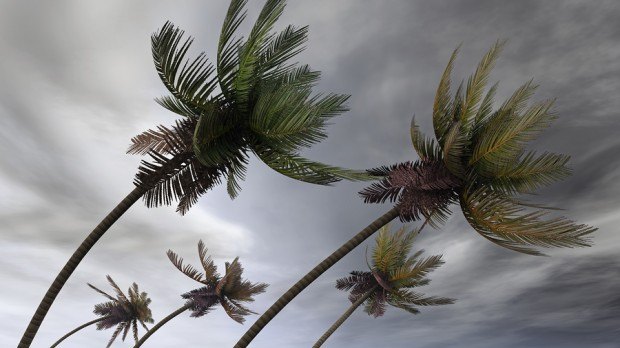Hurricane Matthew intensified en route to Haiti on Monday, bringing 140-mile-per-hour (220 kph) winds and torrential rain that could wreak havoc in Caribbean nations that had yet to evacuate residents of risky coastal homes.
The center of Matthew, a violent Category 4 storm, is expected to close in on southwestern Haiti on Monday night, the U.S. National Hurricane Center said. It has veered from Jamaica but the slow-moving cyclone is still forecast to bring gale-force winds and dump hazardous amounts of rain on the island.
Crawling north at just 6 miles per hour (9 kph), the storm threatens to linger enough for its winds and rain to cause great damage, especially over Haiti where deforestation exacerbates flooding and mudslides.
A combination of weak government and precarious living conditions make the country particularly vulnerable to natural disasters. More than 200,000 people were killed when a magnitude 7 earthquake struck in 2010.
“We are worried about the slow pace of Hurricane Matthew,” said Ronald Semelfort, director of Haiti’s national meteorology center.
“Even in normal times, when we have rain we have flooding that sometimes kills people,” said Semelfort, comparing Matthew to 1963’s Hurricane Flora, which swept away entire villages and killed thousands in Haiti.
Matthew was about 205 miles (330 km) southeast of Kingston, Jamaica, at 11 a.m. EDT Monday (1500 GMT), the NHC said. It is expected to bring between 15 and 40 inches (38 to 101 cm) of rain to parts of Haiti and the Dominican Republic, setting off potentially fatal flash floods and landslides, the NHC said.
The storm comes at a bad time for Haiti. The poorest country in the Americas is set to hold a long-delayed presidential election next Sunday.
On Monday, Frederic Hislain, mayor of the country’s largest slum, the oceanside Cite Soleil in Port-au-Prince, called on the government to evacuate 150,000 people whose homes he said were threatened.
In Jamaica, dawn broke on Monday to reveal partially blue skies and only a slight breeze, making it harder for officials to convince some of the vulnerable to evacuate.
Nonetheless, many residents had already boarded up windows and flocked to supermarkets to stock up on food, water, flashlights and beer. In both Jamaica and Haiti, authorities shut the main airports to wait for the storm to pass.
“People Will Lose Everything”
Charles Bernimolin, the team leader of a U.N. Disaster Assessment and Coordination delegation that had flown into Kingston, remained worried, despite projections that showed the storm sparing Jamaica the worst of its fury.
“We are always concerned. The track is not important,” he said. “The important thing is that it is moving very, very slowly and is very big.
“If I were Jamaican, I would take a Category 5 storm that moves very quickly, rather than this. The quantity of water, the landslides – the people will lose everything.”
In Cuba, which Matthew is due to reach on Tuesday, evacuation operations were well underway, with most tourists in the eastern town of Santiago de Cuba moved inland and given instructions on where to shelter in hotels during the hurricane.
Although many people had voluntarily shifted their belongings into neighbors’ houses, with some even hunkering down in cliff-side caves they said were safe, the sun was shining on Monday morning, and some locals chose to fish in the port area.
“I won’t take shelter until the wind picks up some more,” said Erixan Cuevas, 40, a security guard who was fishing with friends at Santiago’s port. “We are pretty worried.”
Cuban President Raul Castro visited the Cuban military perimeter of the U.S. naval base at Guantanamo on Sunday even as non-essential U.S. personnel were being evacuated in preparation for Matthew, which is forecast to pass directly over the area claimed by both countries for decades.
Castro said he reviewed plans to shelter soldiers and protect weapons.
In Haiti, streets were already flooded in coastal Les Cayes, a town of about 70,000 people that lies in the Matthew’s projected path.
Haitian officials said about 2,000 residents of the La Savane neighborhood of Les Cayes refused to heed government calls to leave their seaside homes and only a few families had yet opted to move to a high school in La Savane, designated as a shelter for up to 600 people. On Sunday night it was without electricity and lit only by candlelight.
On Monday morning, most people in Les Cayes were still at home, just feet away from the sea. Closer to the town center, many were out and about.
Poor Haitians are at times reluctant to leave their homes in the face of impending storms, fearing their belongings will be stolen.
The chief of police for the southern region, Luc Pierre, said it was almost impossible to evacuate such a large number of people against their will.
The U.S. Agency for International Develop said it deployed two disaster response teams to Haiti and Jamaica to coordinate relief efforts, if requested. (Additional reporting by Sarah Marsh and Gabriel Stargardter; Writing by Frank Jack Daniel and Gabriel Stargardter.)





















 Insurance Costs, Climate Concerns Factor Heavily in U.S. Home Buying Decisions
Insurance Costs, Climate Concerns Factor Heavily in U.S. Home Buying Decisions  Berkshire Hathaway Enters Post-Buffett Era as Share Prices Fall
Berkshire Hathaway Enters Post-Buffett Era as Share Prices Fall  Slideshow: Carrier Management’s 2025 Top Editor’s Picks (Unlocked)
Slideshow: Carrier Management’s 2025 Top Editor’s Picks (Unlocked)  Five AI Trends Reshaping Insurance in 2026
Five AI Trends Reshaping Insurance in 2026 




